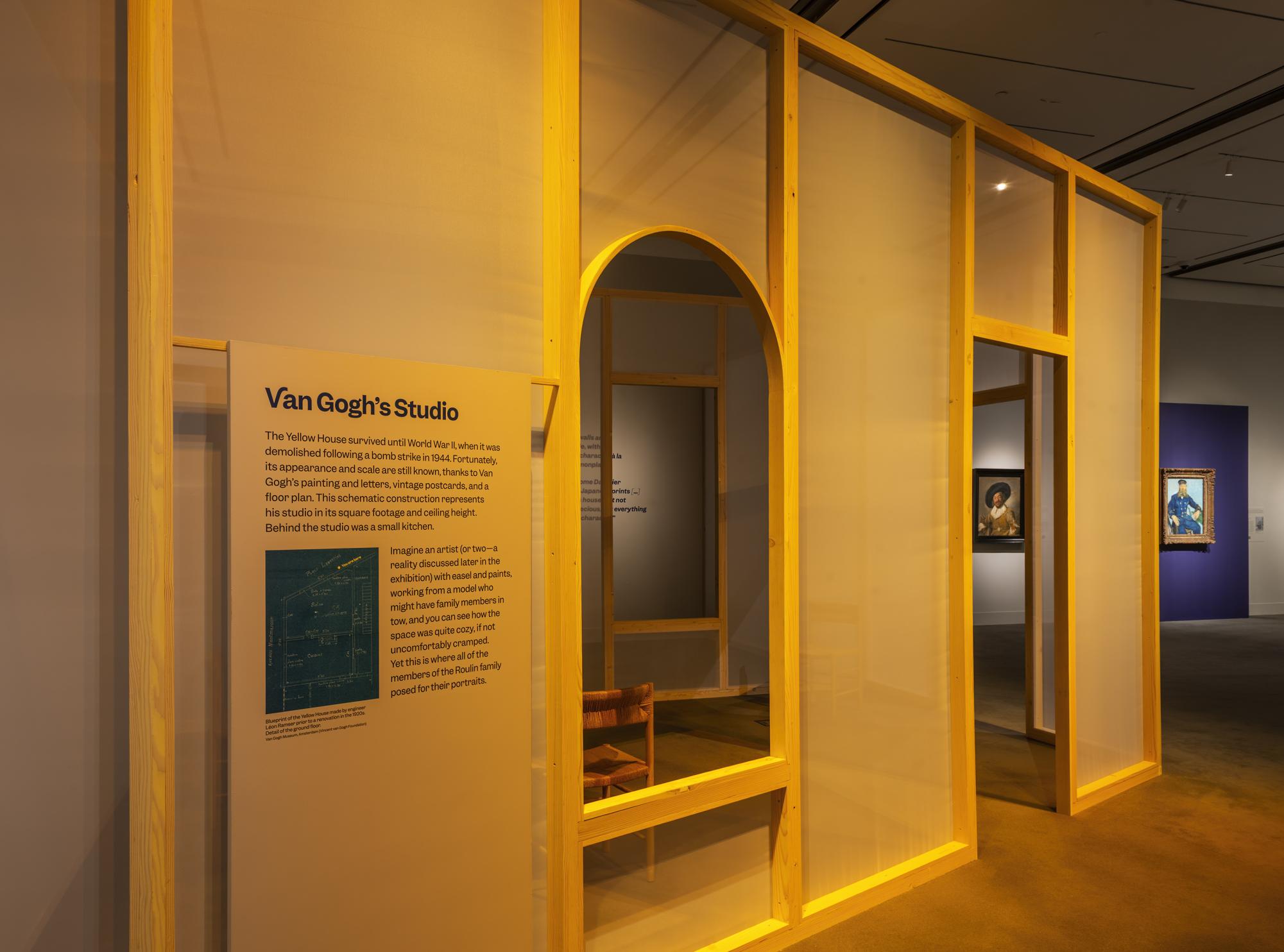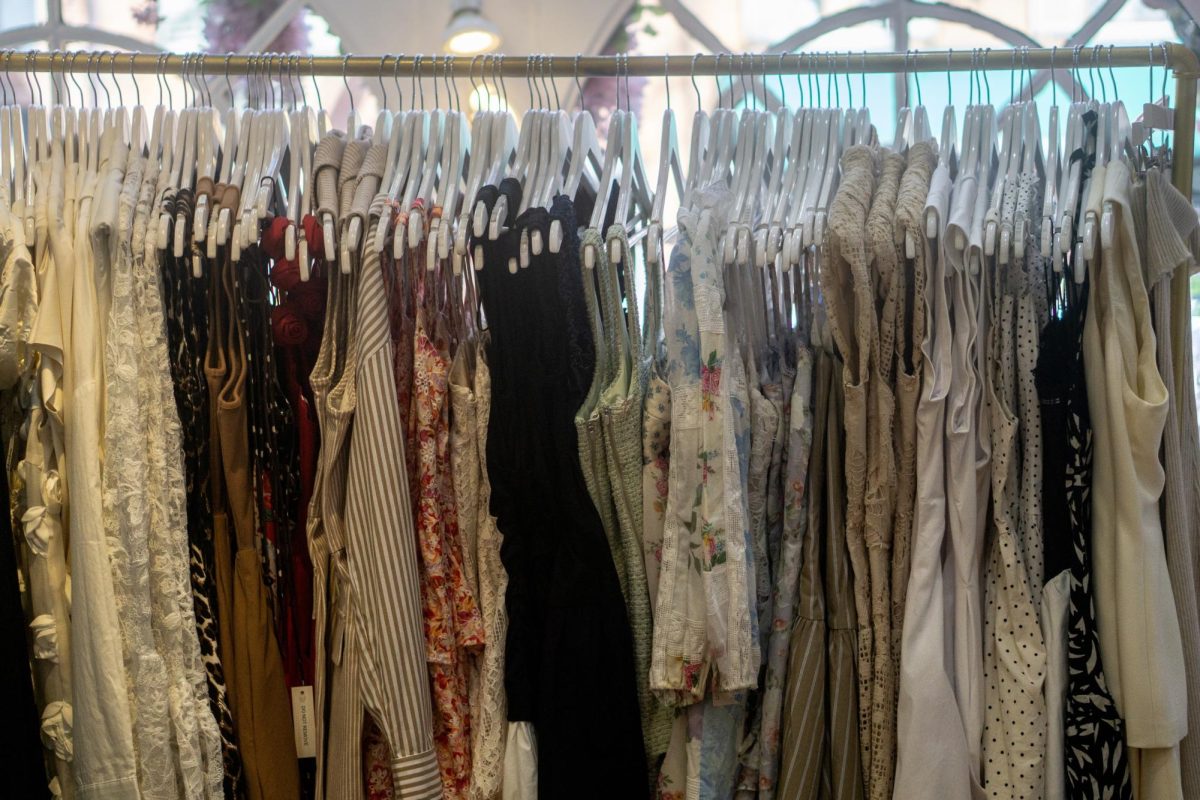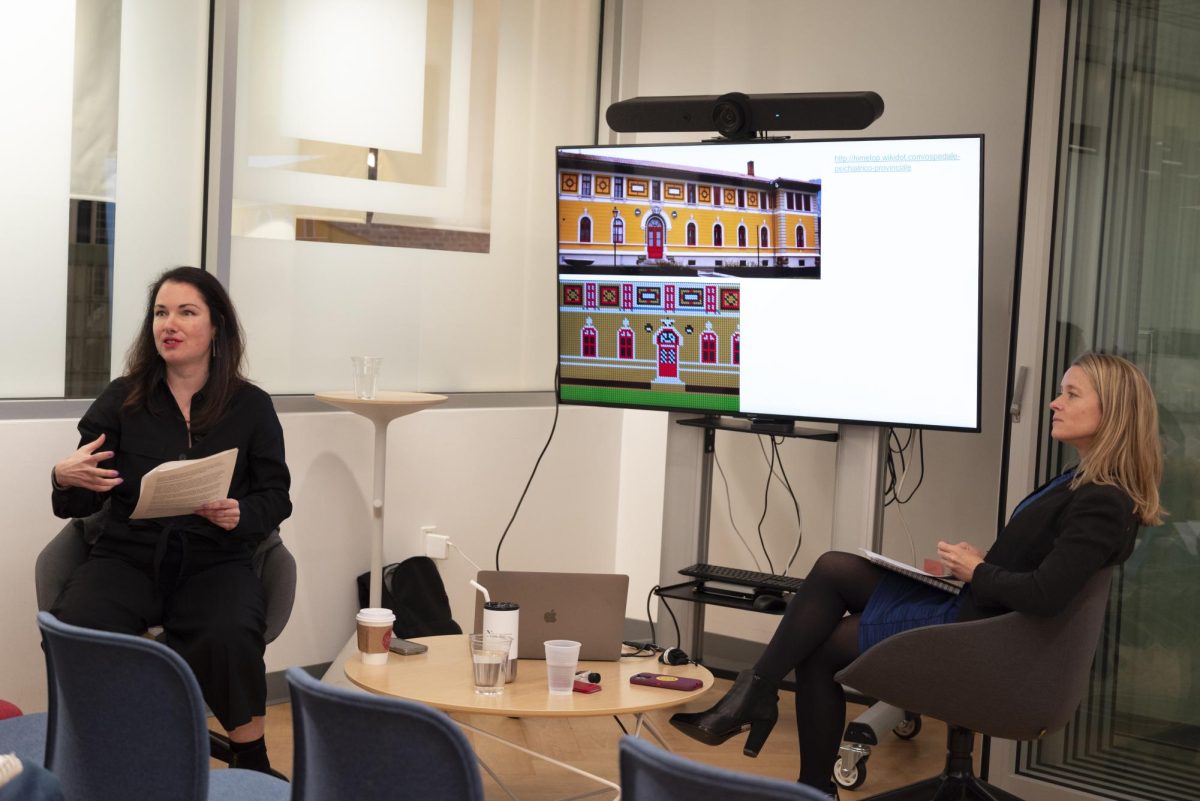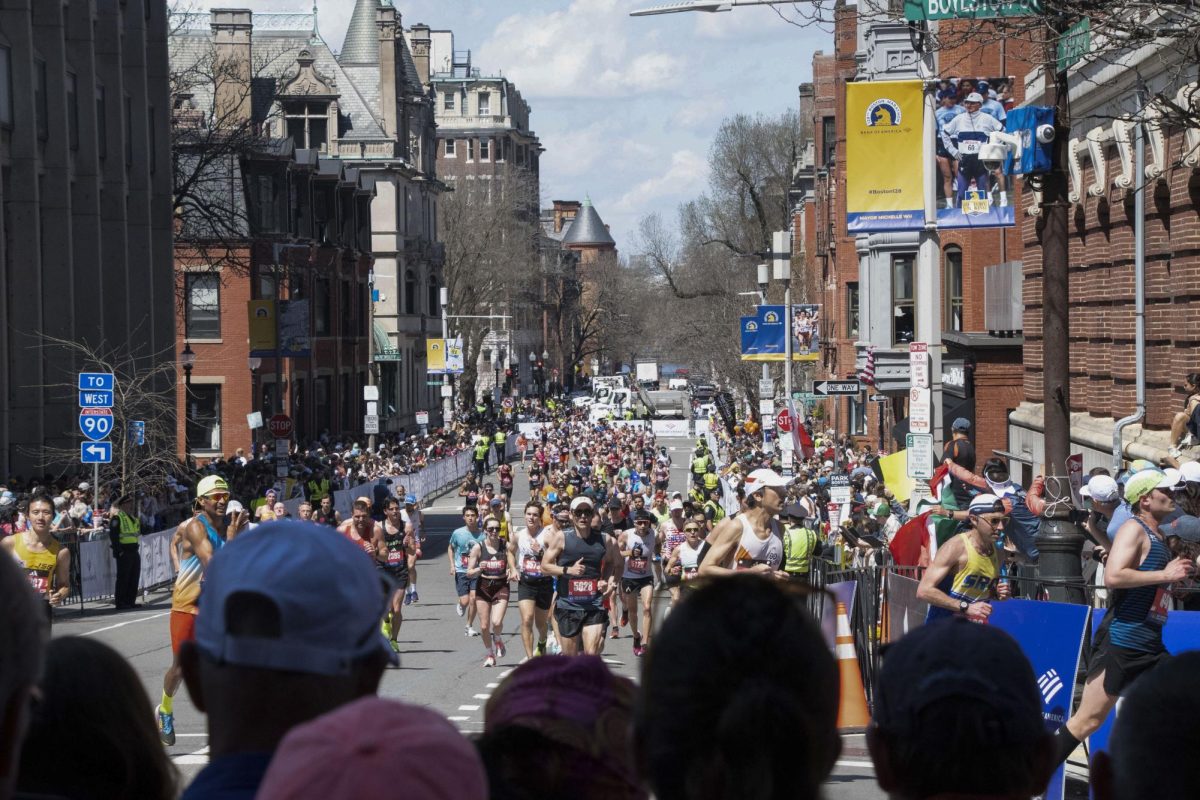Invigorating the spirit of life in art, the Museum of Fine Arts, or MFA, celebrated artist Vincent Van Gogh’s birthday and legacy with vibrant interactive festivities March 30. Visitors participated in designing custom postcards and indulged in cupcakes. Local artist Nick Shea, known for his $1 portraits on index cards at Boston Common, drew mini portraits for visitors in the museum’s Shapiro Family Courtyard.
The event also marked the debut of “Van Gogh: The Roulin Family Portraits,” a series of 23 works that traces Van Gogh’s rich personal history and relationship with the Roulin family. Created during his time in Arles, France, the collection showcases an underrepresented selection of his artistic works.
The exhibit’s minimalistic walls and soft lighting drew the attendees to each piece. One room, dedicated to Van Gogh’s correspondence with the Roulin family, paired letters with motion-activated recordings, allowing his words to echo throughout the space.
“This presents him and his works with a fresh focus,” said visitor Tyler Nelson. “Van Gogh is one of those artists you can revisit over and over again, and to see it in a new context adds a whole new element to understand him.”
A replica of “The Yellow House,” which was demolished after World War II, stands prominently at the exhibit’s entrance. The skeletal reconstruction is based on salvaged blueprints. Van Gogh envisioned a communal studio space for artists, which he briefly shared with French painter and sculptor Paul Gauguin.

Van Gogh’s portraits were an extension of his belief in art’s capability to capture latent emotional truths. He began focusing on portraiture to capture not just likeness, but the essence of his subjects.
“His self-portraits are really personal to me,” said Bea Downey, a third-year student at Emerson College, gesturing to Van Gogh’s “Self-Portrait Dedicated to Paul Gauguin,” a stark and introspective oil piece created for his once-roommate and partner.
Van Gogh approached each work with great care, using rapid brushstrokes and an intimate attention to detail. He paid his subjects for their time with food, drink and company, fostering close personal relationships with the Roulin family that continued beyond his time in Arles.
“I feel enraptured, they’re just so beautifully unique,” said visitor Grey Simmons, a fourth-year at Roger Williams University. “I have a hard time connecting with art sometimes, but with Van Gogh it’s so easy.”
Wearing a vibrant Van Gogh-patterned shirt, they added, “Seeing a bit of myself reflected in his world and imagining what he was going through when creating these gorgeous pieces adds so much weight to me.”
Van Gogh’s mental health struggles profoundly shaped his creative processes. After suffering from a mental breakdown in Arles, he voluntarily committed himself to a psychiatric institution in Saint-Rémy in 1889, where he continued to create numerous artworks. His rapid brushwork conveyed his inner turmoil, revealing his emotional state visibly on canvas.
“He sees the person beyond just what our eyes see,” said Korbin Johnson, Simmons’ friend and a Roger Williams graduate. “He creates different stories within each stroke and reflects their soul in fascinating ways.”
Outside the main exhibit, an interactive wall of 3D sensory tiles invites visitors to trace Van Gogh’s distinctive brushstrokes. This collaboration with Canon EU and Canon North America allows for a tactile experience, with raised tiles designed to mimic the texture of the paintings. More print collections are also available for viewing in the MFA’s Linde Family Gallery.
“In a world where tangible, handmade art is very quickly becoming a thing of the past, his work stands the test of time and makes me feel the urge to continue creating and living,” Simmons said.Timed-entry tickets include general admission and are available on the MFA’s website. The exhibition will be on view through Sept. 7.











